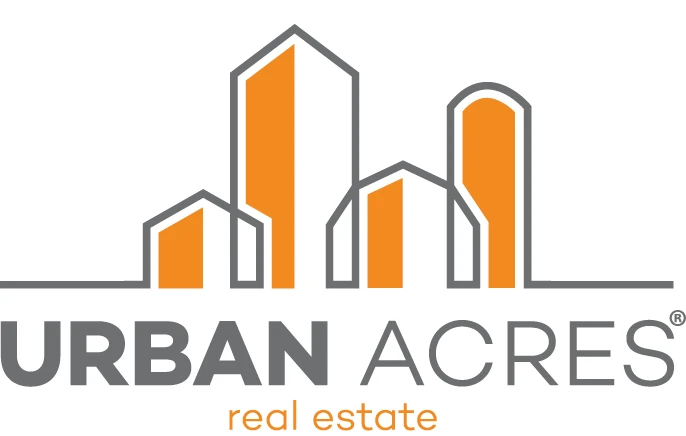Spring is a great time of year for buyers and sellers. If you’re in the market to buy a new home, you’ll have many options to choose from. If you’re a seller, you’ll hopefully have a steady stream of potential buyers.
On the flip side, the busy spring real estate market can also be nerve-wracking. As a buyer, you might find yourself in a bidding war with other potential house hunters. As a seller, it can be a challenge to make your home stand out with so many other homes on the market.
Here are some helpful tips for spring homebuyers and homesellers.
Buying a Home?
#1: Find a REALTOR® and put them to work.
One common misconception many buyers have about working with a REALTOR® is that there’s a fee. However, it’s the seller, not the buyer, who pays the agent’s commission. Your agent will show you homes that meet your criteria and guide you through the buying process. They’ll also have the inside scoop on available homes, sometimes even before they hit the ‘for sale’ listings. Aim to work with the same REALTOR® if you can —it will save you time, and you won’t have to recap your search criteria every time you explore a potential home.
Is it possible to buy a home without a REALTOR®? Yes. But why would you want to go it alone when you have access to an experienced and knowledgeable resource?
#2: Make a list of your must-haves.
While options can be refreshing, they can also be overwhelming. Especially if you don’t know exactly what features you’re looking for in a home. Before you begin your home search, make a list of the qualities your future home should have (e.g. a three-car garage, walk-in closets, a screened porch). Once you’ve made your list, share these must-haves with your REALTOR®. This will save you both time searching the listings and driving around town to showings.
#3: Know what you can afford.
In a recent blog post, we provided several resources to help you calculate how much home you can afford. After answering a few questions about your debt and income, many of these resources will generate an amount based on your responses and desired monthly payment. This is a great place to start. The next step is getting pre-approved for a loan.
#4: Find a local lender.
Once you determine how much you’re comfortable spending on a home, it’s time to find out how much the bank is comfortable lending. Research local lenders first. Sellers often prefer pre-approval letters from local institutions rather than online or out-of-state lenders. Think of it like this: A buyer with convenient access to a local lender often means a quick, smooth transaction for the seller.
#5: Save up for earnest money and closing costs.
There are multiple fees associated with buying a home—everything from the earnest money you give the seller to show you’re serious about your purchase to the closing costs associated with the sale. It can add up if you aren’t prepared. Start saving as early as possible so you don’t have to scramble for cash when you make an offer.
#6: Be prepared to pay list price.
Everyone loves a good deal. And if you have room to negotiate, don’t pass on the opportunity. However, if you come in with an offer well below list price and you’re competing with many buyers for the same home, the seller will likely choose the offer that’s closest to their original price. Your REALTOR® can help you determine if the seller is likely to budge with an offer below asking price.
#7: Don’t skip the inspection.
Before you seal the deal on your new home, make sure a trained professional inspects it for potential issues. If there’s a problem with the home, the seller will often work with the buyer to resolve the problem. This is why you should always make sure your contract includes a home inspection. Your REALTOR® will guide you through the inspection process so you know the right questions to ask and what to expect.
Selling a Home?
#1: Set realistic deadlines.
Selling a home takes time. Even during a season when homes are flying off the market, you should still factor in time to prepare your home for center stage. Give yourself reasonable deadlines to achieve. Estimate how many hours or days it will take to finish any lingering projects and make your home look its best for potential buyers. Consider asking friends and family for help or hire a professional with an outside perspective.
#2: Make strategic renovations and repairs.
Not all home improvements are equal when it comes to increasing your home’s value. In 2019, the project likely to net the biggest return on investment is replacing a garage door. According to Realtor.com, you’ll earn as much as 97.5 percent of your money back. Other projects such as completing a minor kitchen remodel or adding a deck can also add value when you sell your home. One note of caution: Just because you’ve invested in a remodeling project doesn’t mean your bank or home appraiser will equally value that investment.
Ask your REALTOR® what improvements will help your home sell for the biggest profit and which ones might not be worth your effort.
#3: Make your home sparkle and shine.
Have you noticed the smudges on your windows? The dust accumulated in the cracks of your baseboards? You might not see it, but buyers definitely will. The American Cleaning Institute recommends following the top-to-bottom, left-to-right rule for cleaning each room. Focus on the areas potential buyers will be most interested in—the living room, dining room, kitchen, and bathroom.
#4: Remove clutter and de-personalize.
Potential buyers need to picture themselves in your home. And if they can’t see past your personal touches, they may be less likely to make an offer. Pack away unused, non-essential items and clear away anything that makes your space feel cluttered. If possible, bring in a professional to stage your home. In a 2018 survey, 85 percent of staged homes sold for 6-25 percent more than unstaged homes.
#5: Add a fresh coat of paint.
Painting your walls can be a good idea, especially if you’re trying to hide wall damage or cover up bold or outdated colors. Zillow reports that grey-blues in your kitchen can help your home sell for an average of $1,809 more. A light blue bathroom sold for $5,440 more than anticipated in 2018. Consult with your listing agent if you’re unsure if painting will be a good investment and maximize the value of your home.
#6: Pay special attention to your curb appeal.
Winter isn’t exactly the best season for curb appeal. But as the snow melts and your landscape transforms from brown to green, it’s a great time to focus on your home exterior. Start with any areas that need repairs, like roofs, gutters, siding, and fences. Clear away dirt and debris from the sides of your house, and power wash your driveway and sidewalk. Add a few eye-catching spring planters to welcome potential buyers.
#7: Price it right.
Once your home is ready to sell, work with a REALTOR® to price it competitively. With their knowledge of the local market and familiarity with comparable listings and sales, your REALTOR® is a valuable resource. They can help you avoid turning away buyers with a price that’s too high or leaving money on the table with a price that’s too low.
Ready to get started? We’re ready to help you buy or sell a home this spring! Just reach out and let us know how we can help.
Looking to list your home? Check out our room-by-room checklist for preparing your home to sell.





